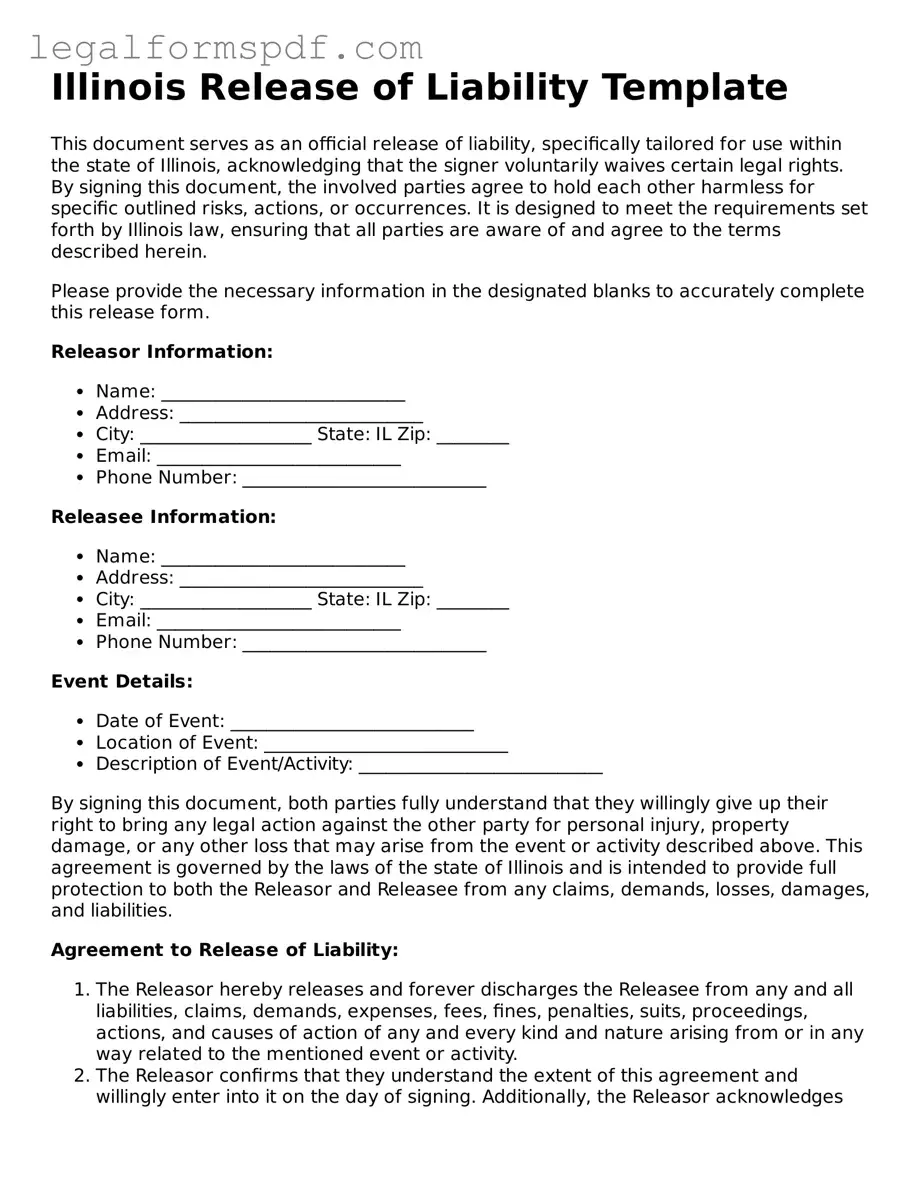Illinois Release of Liability Template
This document serves as an official release of liability, specifically tailored for use within the state of Illinois, acknowledging that the signer voluntarily waives certain legal rights. By signing this document, the involved parties agree to hold each other harmless for specific outlined risks, actions, or occurrences. It is designed to meet the requirements set forth by Illinois law, ensuring that all parties are aware of and agree to the terms described herein.
Please provide the necessary information in the designated blanks to accurately complete this release form.
Releasor Information:
- Name: ___________________________
- Address: ___________________________
- City: ___________________ State: IL Zip: ________
- Email: ___________________________
- Phone Number: ___________________________
Releasee Information:
- Name: ___________________________
- Address: ___________________________
- City: ___________________ State: IL Zip: ________
- Email: ___________________________
- Phone Number: ___________________________
Event Details:
- Date of Event: ___________________________
- Location of Event: ___________________________
- Description of Event/Activity: ___________________________
By signing this document, both parties fully understand that they willingly give up their right to bring any legal action against the other party for personal injury, property damage, or any other loss that may arise from the event or activity described above. This agreement is governed by the laws of the state of Illinois and is intended to provide full protection to both the Releasor and Releasee from any claims, demands, losses, damages, and liabilities.
Agreement to Release of Liability:
- The Releasor hereby releases and forever discharges the Releasee from any and all liabilities, claims, demands, expenses, fees, fines, penalties, suits, proceedings, actions, and causes of action of any and every kind and nature arising from or in any way related to the mentioned event or activity.
- The Releasor confirms that they understand the extent of this agreement and willingly enter into it on the day of signing. Additionally, the Releasor acknowledges that this release is comprehensive and applies to all claims, not just those known at the time of signing.
- This document is intended to be a final and complete release of liability according to the laws of Illinois and shall be binding upon the heirs, executors, administrators, successors, and assigns of both parties.
Signature of Releasor:
_____________________________________ Date: _________________
Signature of Releasee:
_____________________________________ Date: _________________
This document is executed in accordance with and shall be governed by the laws of the state of Illinois. It is advised that all parties retain a copy of this form for their records and consultation with legal counsel is recommended should any party have questions regarding the terms contained herein.
